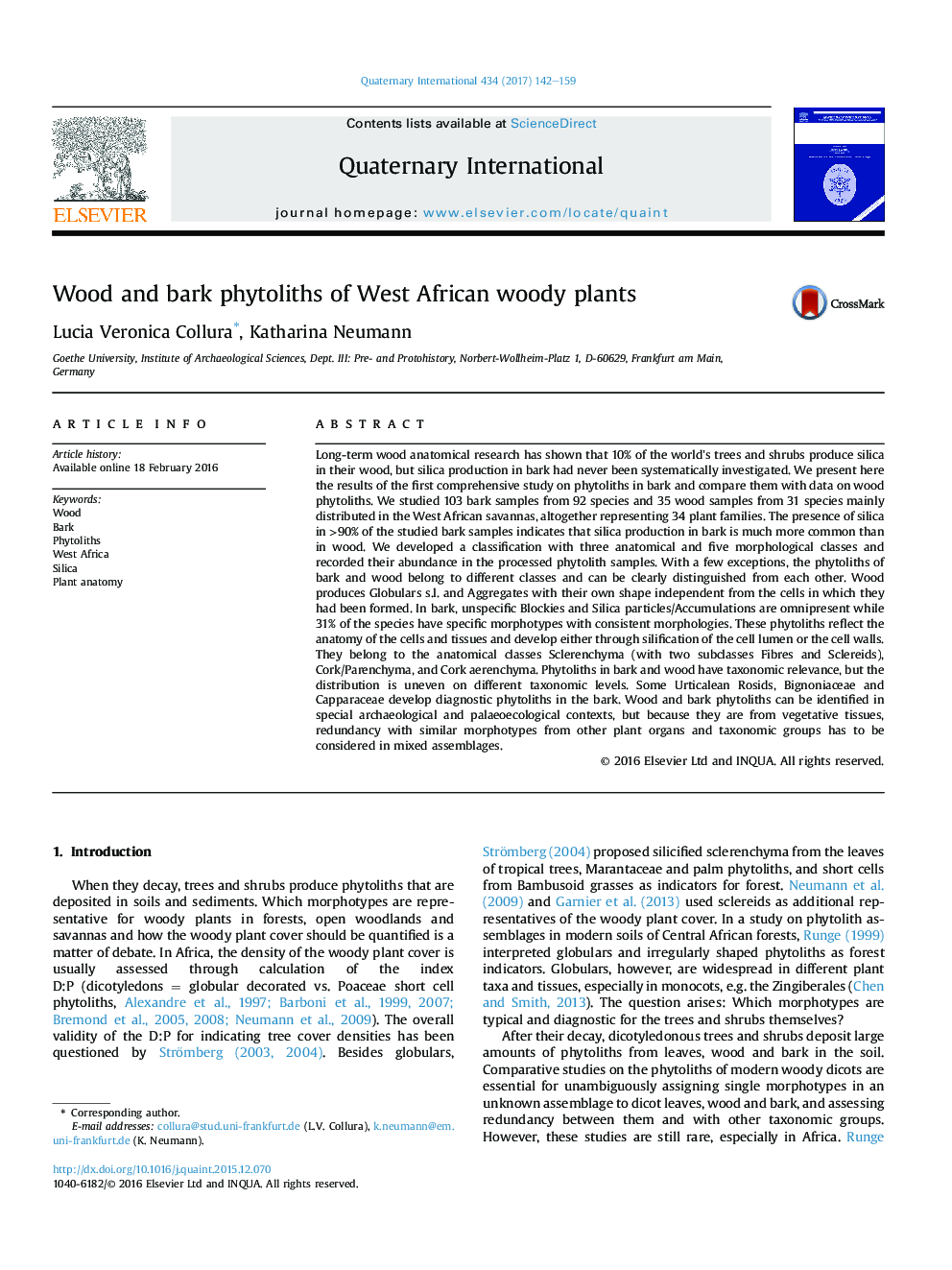| کد مقاله | کد نشریه | سال انتشار | مقاله انگلیسی | نسخه تمام متن |
|---|---|---|---|---|
| 5113692 | 1377945 | 2017 | 18 صفحه PDF | دانلود رایگان |
Long-term wood anatomical research has shown that 10% of the world's trees and shrubs produce silica in their wood, but silica production in bark had never been systematically investigated. We present here the results of the first comprehensive study on phytoliths in bark and compare them with data on wood phytoliths. We studied 103 bark samples from 92 species and 35 wood samples from 31 species mainly distributed in the West African savannas, altogether representing 34 plant families. The presence of silica in >90% of the studied bark samples indicates that silica production in bark is much more common than in wood. We developed a classification with three anatomical and five morphological classes and recorded their abundance in the processed phytolith samples. With a few exceptions, the phytoliths of bark and wood belong to different classes and can be clearly distinguished from each other. Wood produces Globulars s.l. and Aggregates with their own shape independent from the cells in which they had been formed. In bark, unspecific Blockies and Silica particles/Accumulations are omnipresent while 31% of the species have specific morphotypes with consistent morphologies. These phytoliths reflect the anatomy of the cells and tissues and develop either through silification of the cell lumen or the cell walls. They belong to the anatomical classes Sclerenchyma (with two subclasses Fibres and Sclereids), Cork/Parenchyma, and Cork aerenchyma. Phytoliths in bark and wood have taxonomic relevance, but the distribution is uneven on different taxonomic levels. Some Urticalean Rosids, Bignoniaceae and Capparaceae develop diagnostic phytoliths in the bark. Wood and bark phytoliths can be identified in special archaeological and palaeoecological contexts, but because they are from vegetative tissues, redundancy with similar morphotypes from other plant organs and taxonomic groups has to be considered in mixed assemblages.
Journal: Quaternary International - Volume 434, Part B, 1 April 2017, Pages 142-159
